10 Ways to Get IBM SPSS Software for Free in 2025 (Legal Student & Academic Options)
IBM SPSS Statistics fills a critical need for many students working on academic projects. This statistical software takes up 860 MB of space on Windows and Mac systems, making it a substantial download for data analysis and visualization work.
Good news – IBM SPSS online provides a 30-day free trial of SPSS Statistics. Students can legally access this tool without paying anything upfront. You’ll spend less than a minute on registration, with the option to use your LinkedIn account for faster signup. The student version has all the required features for coursework and research.
This guide shows how to download IBM SPSS and run your free trial. We cover the entire process, from locating IBM’s official website to picking the correct version for your computer (Windows 10 or Mac). Ready to start using this statistical software? Let’s go!
First, it is imperative to understand the history of SPSS data analysis tools and the functionality of the SPSS application.
What is SPSS Software? Essential Features Every Researcher Needs

SPSS software powers data analysis at over 80% of all US colleges today. The Statistical Package for the Social Sciences (SPSS) ranks among the world’s most popular statistical software packages since it first appeared in 1968. SPSS Inc. created the original version before IBM purchased it in 2009. Users particularly value its friendly interface and wide-ranging abilities.
What exactly does SPSS software do? The program lets researchers handle complex statistical analysis without headaches. Users can run everything from basic descriptive statistics to advanced methods like regression analysis, clustering, and factor analysis – essential tools for anyone conducting quantitative research. The software delivers real results, too. In just four months, banking and insurance companies saved over $2.4 million after using IBM SPSS 30.1 Crack to uncover a motor insurance fraud ring.
SPSS is helpful in market research, education, healthcare, and retail, and all benefit from its capabilities. This article covers SPSS’s key features, walks through its interface, shows how different industries use it, and explains how this tool helps streamline research work.
SPSS Free Trial
IBM SPSS comes with a 30-day free trial that gives researchers and analysts full access to all statistical features before they buy. The trial version lets you test whether SPSS fits your analysis needs without spending money upfront.
Anova SPSS
Analysis of Variance (ANOVA) in SPSS helps compare means across multiple groups using robust statistical methods. One-way ANOVA tests how a categorical variable with three or more groups affects one continuous dependent variable. Think of it as an expanded t-test that works beyond just two groups.
Running a One-Way ANOVA requires these steps:
- Click Analyze > Compare Means > One-Way ANOVA on the menu bar
- Move your dependent variable to the “Dependent List” box
- Move your independent variable (factor) to the “Factor” box
- Optionally, click “Post Hoc” for multiple comparisons tests
- Click OK to generate results
Your output shows an ANOVA table like this:
| Source | Sum of Squares | df | Mean Square | F | Sig. |
|---|---|---|---|---|---|
| Between Groups | 26.788 | 2 | 13.394 | 9.209 | .000 |
| Within Groups | 509.082 | 350 | 1.455 | ||
| Total | 535.870 | 352 |
When the significance value falls below 0.05, you can reject the null hypothesis that group means are equal. The means plot gives you a visual picture of these differences, making them easier to understand.
SPSS Select Cases
Select Cases lets researchers filter datasets to analyze specific data subsets. This feature proves helpful when focusing on particular groups within your sample.
Access this tool by:
- Click Data > Select Cases in the menu bar
- In the dialog box, select “If condition is satisfied.”
- Click the If button to define your condition
- Build your expression (e.g., “Sex = 0” to select only females)
- Click Continue and then OK
After filtering, SPSS marks excluded cases with a strikethrough in Data View. A new filter variable appears in your dataset, and “Filter On” appears at the bottom right, confirming that your analyses will use only selected cases.
For more advanced filtering, create expressions with logical operators:
- “Sex = 0 & Height > 68” selects females taller than 68 inches
- “Duration > 8 | Height < 60” selects cases with duration greater than 8 minutes OR height less than 60 inches
To remove the filter, return to Select Cases and choose “All cases”.
SPSS Modeler
SPSS Modeler takes you beyond basic statistics into advanced data science and machine learning. This visual tool helps quickly build predictive models and put them into business operations.
Built around the CRISP-DM model, SPSS Modeler handles data mining from initial exploration to final deployment. The visual interface helps users find patterns without needing extensive programming skills.
Key features include:
- Data preparation and discovery tools for cleaning and transforming raw data
- Predictive analytics for forecasting future outcomes
- Model management and deployment for integrating insights into operations
- Machine learning algorithms from both proprietary and open-source libraries
SPSS Modeler stands out through its flexibility—you can use it on-premises or in the cloud, add R and Python extensions, and adapt to different technical skill levels. Companies can start with small projects and grow into enterprise-wide predictive analytics.
The free trial lets you test these advanced features before buying.
What is IBM SPSS Software and Why Does It Matter
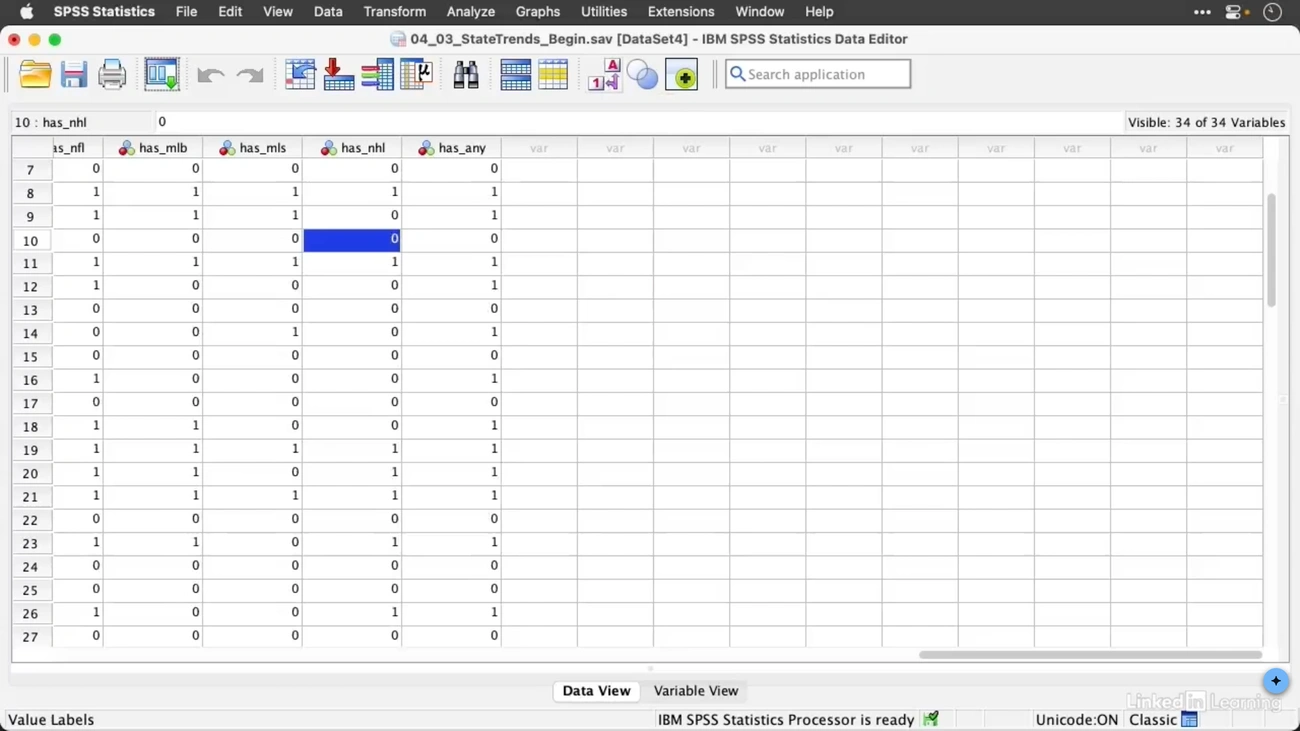
Image Source: Medium
SPSS stands for Statistical Package for the Social Sciences, though IBM changed its name to IBM SPSS Statistics after buying it in 2009. Three researchers—Norman H. Nie, C. Hadlai (Tex) Hull, and Dale H. Bent—created this software in 1968 because they needed a better way to handle large amounts of social science data.
SPSS meaning and historical background
Frustration sparked SPSS’s creation. In the mid-1960s, these researchers struggled to meet the teaching and research needs at Stanford University’s political science department. They hated using different programs and writing code, and had hardly any documentation, which took forever. Their solution? Build an integrated system with statistical programs already built in.
SPSS started as a batch processor using punch cards. The software quickly caught on throughout academia. More than 60 universities adopted SPSS by the late 1960s. Everything changed when McGraw-Hill published the first SPSS user’s manual in 1970. Once students could find it in college bookstores, demand took off.
SPSS grew remarkably over the decades:
| Decade | Key Developments |
|---|---|
| 1960s | First release (1968); 60+ universities adopted it |
| 1970s | First manual published; grew to ~600 organizations, including NASA |
| 1980s | SPSS-X for mainframes; PC version launched (needed nine floppy disks) |
| 1990s | Windows and Mac versions; bought Clementine (became SPSS Modeler) |
| 2000s | V10 allowed unlimited file sizes; V14 added Python; IBM bought SPSS |
| 2010s | Added advanced features; connected to open source; added Bayesian Statistics |
The original SPSS manual (Nie, Bent & Hull, 1970) earned recognition as one of “sociology’s most influential books” for making statistical analysis available to everyone. Regular researchers without programming skills could suddenly do complex statistical work independently.
What is IBM SPSS software used for in research?
SPSS now reaches far beyond its social science roots. Researchers across many fields use it for:
- Comprehensive data management—SPSS reads and writes data from many sources, such as ASCII text files, other statistics packages, spreadsheets, and databases, through ODBC and SQL. The software offers solid tools for selecting cases, reshaping files, and creating new data.
- Statistical analysis — Users can run everything from simple descriptive stats to complex multivariate analysis. SPSS works exceptionally well for:
- Descriptive statistics
- Inferential statistics
- Correlation analysis
- Regression analysis
- Factor analysis
- Cluster analysis
- Data visualization—The program includes many graphical options, allowing researchers to present findings through charts, graphs, and custom visualizations.
IBM SPSS Statistics Crack takes two approaches to usability. Beginners appreciate the point-and-click interface, while advanced users can use its proprietary 4GL command syntax language. This programming ability creates reproducible output, makes repetitive tasks easier, and handles complex data manipulations.
SPSS works beyond academia in many sectors. Healthcare organizations run patient delivery programs using SPSS-analyzed data. Schools identify at-risk students and create targeted help. Market researchers pull insights from customer data to predict trends and improve campaigns. Government offices, survey companies, and data miners depend on its analytical power.
SPSS remains valuable because it turns raw data into meaningful insights that drive decisions, fulfilling the company’s original mission to “drive the widespread use of data in decision-making”.
Essential Features of IBM SPSS Every Researcher Should Know
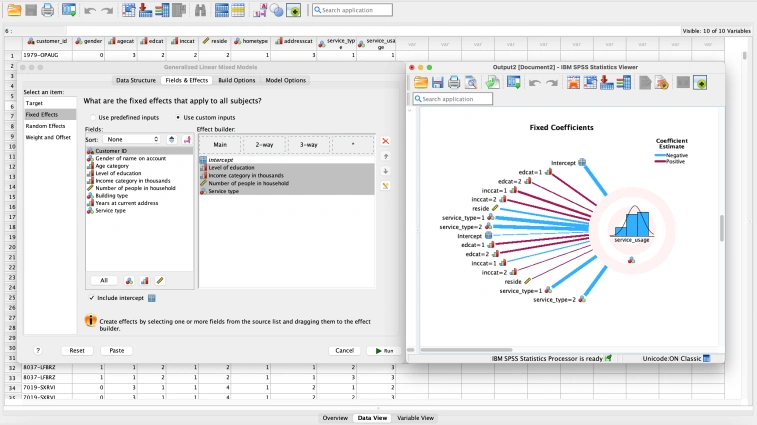
Image Source: IBM
Research success depends on good analytical tools. SPSS is a program packed with features that simplify complex statistics and data management. Here’s why researchers across many fields find SPSS so valuable.
Descriptive and Bivariate Statistics Modules
SPSS builds on strong statistical analysis foundations. Researchers quickly generate descriptive statistics using commands like Descriptives, Means, and Examine. Without much work, these tools deliver key summary statistics—means, standard deviations, and frequency distributions.
Looking at relationships between variables? SPSS offers solid bivariate statistics, including correlation analysis, t-tests, and ANOVA. Checking group differences takes just a few clicks: Analyze > Compare Means > One-Way ANOVA, select your variables, and review your results. The ANOVA table shows sums of squares, degrees of freedom, and significance values to help determine meaningful group differences.
Predictive Modeling with SPSS Modeler
SPSS Modeler takes analytics beyond basic statistics into predictive modeling territory. Researchers build models using machine learning and AI without needing extensive coding skills.
The modeler offers many algorithms for different analysis needs:
- Decision trees (C5.0)
- Neural networks
- Regression models
- Clustering algorithms
SPSS Modeler shines with its drag-and-drop interface. Researchers create predictive workflows by connecting nodes for data sources, transformations, and modeling techniques. The system evaluates model performance automatically, showing accuracy metrics and predictor importance.
Text Analytics for Open-Ended Responses
Survey data with written responses creates special challenges. SPSS Text Analytics for Surveys turns unstructured text into measurable data, helping researchers:
- Extract key concepts from responses
- Find patterns using language technologies
- Create categories for response classification
- Export categorized data to SPSS Statistics
This tool uses natural language processing to spot important themes while letting users refine results through simple drag-and-drop operations. Researchers combine number-based and text-based insights for fuller analysis.
Visualization Designer for Custom Graphs
Good data communication needs strong visuals. SPSS Visualization Designer helps researchers create custom graphs without programming. Features include:
- Drag-and-drop interface
- Many built-in visualization templates
- Style sheets for consistent branding
- Enterprise-wide deployment options
The designer suggests appropriate chart types based on your data, making it quick to create everything from simple bar graphs to complex interactive visuals. You can save custom designs as templates for consistent presentation across projects.
Data Management and Metadata Documentation
The SPSS program handles data management exceptionally well. It blends database and spreadsheet functions, allowing researchers to work efficiently with large datasets.
SPSS offers strong metadata management, letting users document:
- Variable definitions and measurements
- Value labels and codes
- Missing data patterns
- Relationships between variables
The Variable View interface lets researchers record essential metadata like variable names, types, labels, and measurement levels. This documentation supports research reproducibility and data sharing by giving future users the context to understand results correctly.
The software also helps document project-level and data-level information, improving data quality and making datasets more discoverable and reusable for future research.
Understanding SPSS Interface: Variable View vs Data View
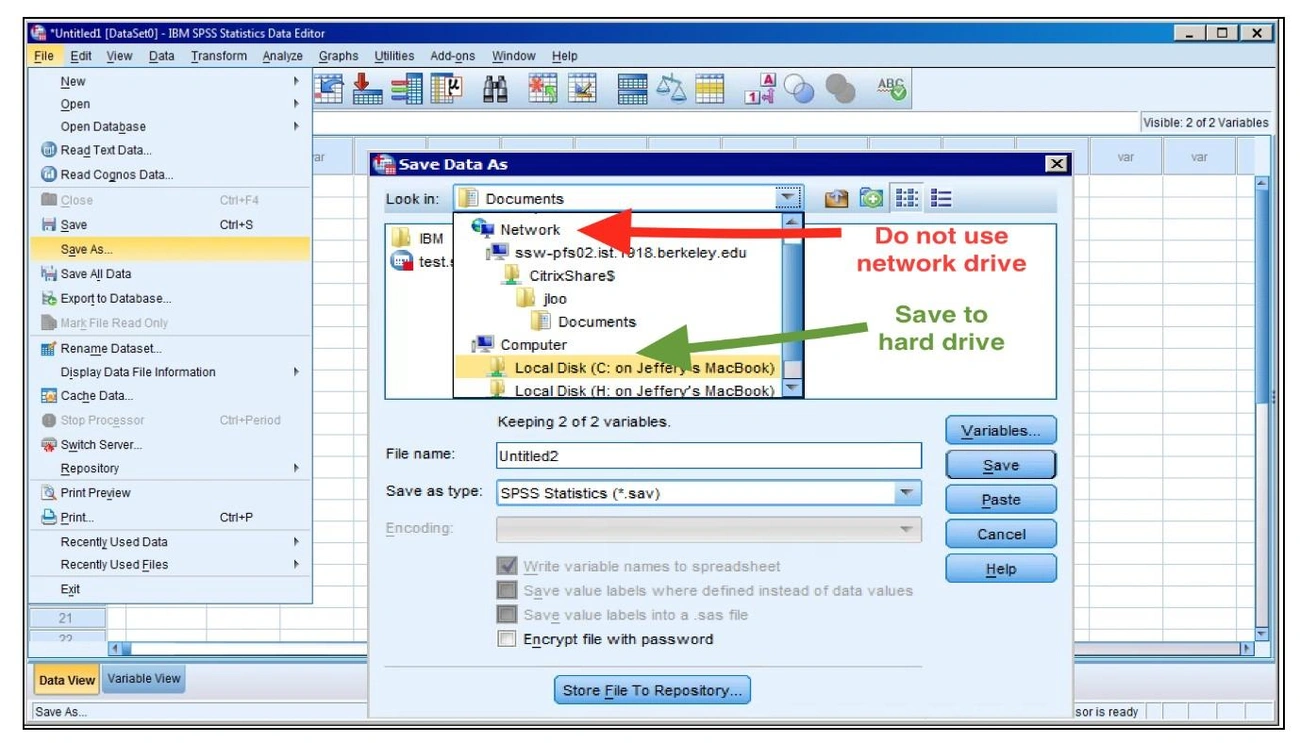
Image Source: OEN Manifold
SPSS download users need to master two primary views within the interface. The Data Editor window is the central hub for all operations and offers two different ways to see your data.
Variable View: Name, Type, Label, Measure
Variable View shows essential metadata about your dataset. Each row stands for a different variable, while columns display various attributes about those variables. Users work with several key fields when defining variables:
- Name: Your variable identifier (no spaces allowed, can’t start with numbers)
- Type: Sets data format (numeric, string, date, etc.)
- Label: Adds descriptive text explaining the variable’s meaning
- Measure: Tells SPSS whether the variable is nominal, ordinal, or scale
Pay special attention to the Measure field – it controls which statistical tests SPSS lets you run. Incorrectly specifying the measurement level might ruin your results. SPSS automatically labels numeric data as “Scale” variables, but if these numbers represent categories, you must change this setting yourself.
Data View: Case Rows and Variable Columns
Data View shows your actual values in a spreadsheet layout. Here:
- Each row equals one case (a person, observation, or subject)
- Each column equals one variable (a measurement or attribute)
Take survey data from college students as an example – each row would be one student, while columns might show age, gender, and year in school. This arrangement makes examining data straightforward.
Switching Between Views for Data Entry and Analysis
Researchers constantly flip between these views during their work. You can switch by:
- Clicking the tabs labeled “Data View” or “Variable View” at the bottom left corner
- Pressing CTRL+T to jump between views
- Double-clicking any variable name in Data View to find it in Variable View
Moving easily between views helps tremendously. Variable View gives you the big picture when working with many variables. Data View lets you check actual values and spot unusual patterns.
The SPSS download includes a handy trick: hover your mouse over a variable name in Data View, and a yellow information box will appear without switching views. You can also display text labels instead of numeric codes by clicking the value labels icon, making your data easier to understand.
SPSS Use Cases Across Industries
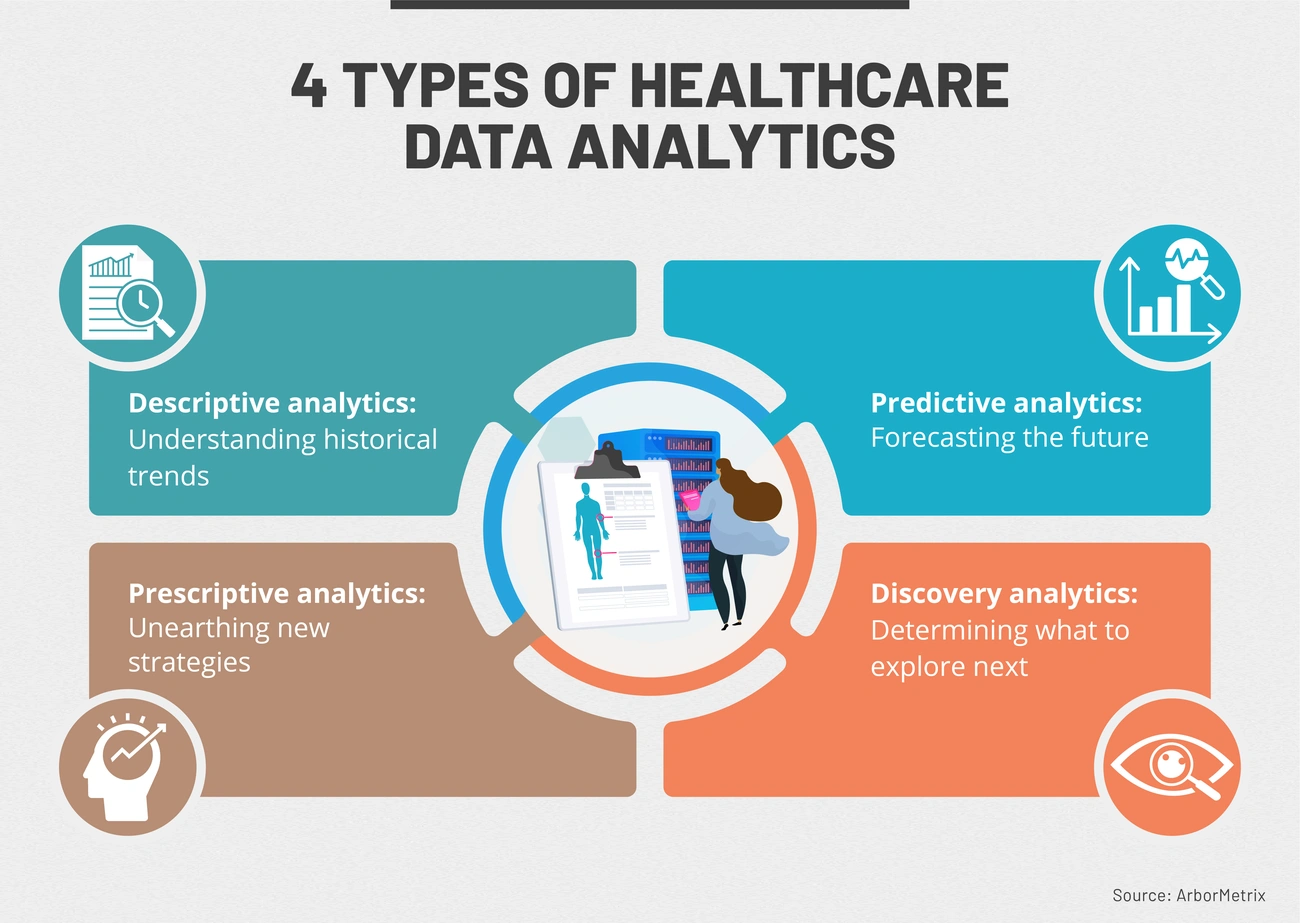
Image Source: Maryville University Online
SPSS proves helpful beyond academic walls. Organizations from many industries use their analytical strength to tackle business challenges, and different sectors use SPSS capabilities to make data-driven choices.
Market Research: Trend Forecasting and Segmentation
Market researchers turn raw data into practical insights with SPSS by spotting key factors in customer behavior and market trends. Companies analyze past market data through descriptive statistics – sales numbers, growth rates, and customer demands. This method gives businesses an edge by matching operations to emerging market patterns.
SPSS helps researchers divide markets into functional categories through cross-tabulation analysis that explores links between demographics and preferences. Factor Analysis finds underlying dimensions affecting customer decisions, grouping many variables into key factors representing fundamental customer values.
Education: Student Retention and Performance Prediction
Schools tackle student retention problems with SPSS. Currently, over 80% of US colleges use this software. Universities build prediction models that identify dropout-risk students with accuracy rates reaching 82.4%.
Research at the University of North Texas Dallas showed that students without declared majors stayed at lower rates, while Criminal Justice, Interdisciplinary Studies, and Business majors stayed more often. California State University learned that students taking University Studies 100 increased their chances of staying by 53.1%.
Healthcare: Patient Outcome Modeling
Hospitals now use SPSS to improve patient care through data analysis. Medical centers predict readmissions based on patient history, hospital stay length, and after-discharge care plans.
Doctors use survival analysis to estimate when specific events might happen, helping them find high-risk patients early. Healthcare teams run ANOVA or t-tests to spot meaningful differences in care quality between groups. Public health departments detect disease outbreaks using cluster analysis that groups areas showing similar infection rates.
Retail: Customer Profiling and Purchase Behavior
Stores collect vast amounts of sales data. SPSS algorithms find purchase patterns – which products customers typically buy together. These findings shape decisions about store layouts, product selection, and targeted promotions.
Retailers with loyalty programs use SPSS for personalized marketing. The software creates models that determine which offers suit specific customers, calculate response likelihood, and estimate acceptance value. Stores see bigger purchases, more revenue per visit, and better marketing returns.
What is SPSS Software? Essential Features Every Researcher Needs
SPSS software powers data analysis at over 80% of all US colleges today. The Statistical Package for the Social Sciences (SPSS) ranks among the world’s most popular statistical software packages since it first appeared in 1968. SPSS Inc. created the original version before IBM purchased it in 2009. Users particularly value its friendly interface and wide-ranging abilities.
What exactly does SPSS software do? The program lets researchers handle complex statistical analysis without headaches. Users can run everything from basic descriptive statistics to advanced methods like regression analysis, clustering, and factor analysis – essential tools for anyone conducting quantitative research. The software delivers real results, too. In just four months, banking and insurance companies saved over $2.4 million after using SPSS to uncover a motor insurance fraud ring.
SPSS software trial works for many fields—market research, education, healthcare, and retail- and all benefit from its capabilities. This article covers the key features of SPSS, walks through its interface, shows how different industries use it, and explains how this tool helps streamline research work.
Benefits of SPSS Predictive Analytics
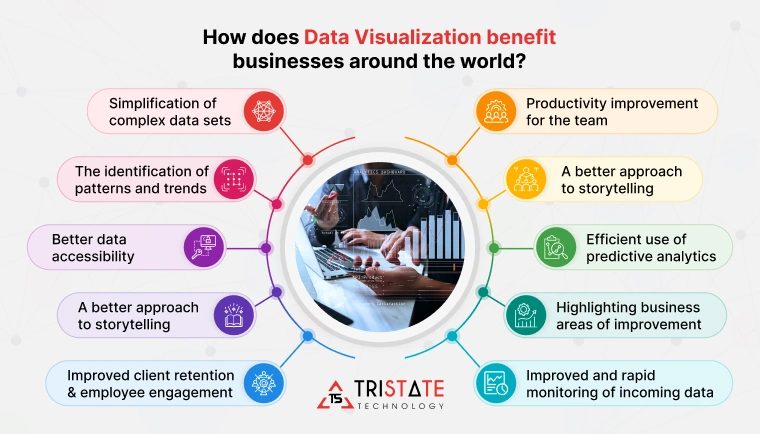
Image Source: TriState Technology
SPSS predictive analytics turns raw data into business solutions. Organizations gain advantages across many areas – from customer relations to equipment maintenance.
Improving Customer Satisfaction through Personalization
Customers now expect personalized experiences. SPSS helps companies understand consumer behavior patterns and create tailored customer journeys. Businesses using SPSS develop targeted campaigns that match individual preferences. Studies show that 56% of consumers are more likely to buy again from brands offering personalized experiences.
SPSS boosts customer satisfaction by customizing information to specific needs, which builds loyalty and increases profits. Retail, e-commerce, telecommunications, and education companies use SPSS to spot patterns in customer data for micro-segmentation – a strategy 62% of businesses rate highly effective for marketing.
Reducing Operational Costs with Forecasting
SPSS Forecasting precisely predicts resource needs and demand patterns, cutting unnecessary expenses. Companies accurately project staffing requirements for call centers or product demand fluctuations.
This helps businesses:
- Match inventory with logistics forecasts
- Cut overstock costs
- Use resources better
- Eliminate money-losing activities
SPSS forecasting finds hidden cycles in data, helping operations align with predictable patterns like seasonal shopping. Methods like autoregression and exponential smoothing track short-term trends and long-term patterns, speeding up market responses.
Risk Mitigation via Early Detection Models
Most systems struggle to spot fraud among everyday transactions, but SPSS excels at this task. One insurance company saved $25 million in the first year after adding SPSS predictive analytics. Banking and insurance users caught a motor insurance fraud ring within four months, saving $2.4 million.
SPSS uses sophisticated techniques like identity resolution, business rules, segmentation, and predictive modeling. The system generates propensity scores showing fraud likelihood – a claim scoring 89% would immediately trigger an investigation.
Avoiding Downtime with Predictive Maintenance
Surprise equipment failures waste money and damage customer trust. SPSS predictive maintenance forecasts operational problems before they happen, maximizing production uptime. Deloitte reports that this approach can cut facility downtime by 5-15% while boosting labor productivity by 5-20%.
SPSS examines data from sensors and IoT devices to check equipment health in real-time, catching developing issues before failures occur. Early warnings let maintenance teams schedule repairs during slow periods, minimizing disruption.
Limitations and Considerations When Using SPSS
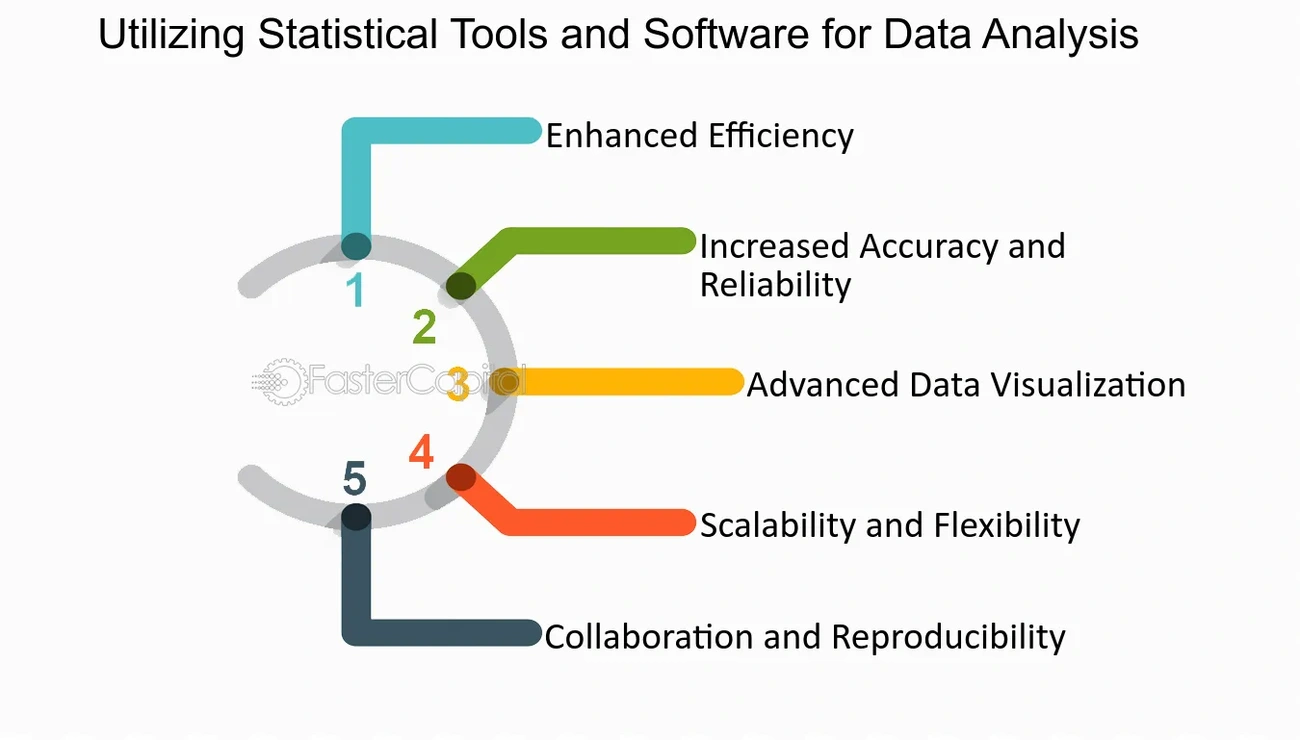
Image Source: FasterCapital
SPSS has several limitations that researchers need to be aware of. Recognizing these constraints helps users apply the software correctly and get valid results.
Scalability Issues with Big Data Sets
SPSS encounters problems with massive datasets because of memory limitations. The software slows down dramatically or crashes when data exceeds the available RAM. Files with too many columns (10,000+ variables) process painfully slow, though datasets with millions of rows but few columns might still work fine.
Major problems include:
- Memory barriers when datasets grow too large
- Extremely long processing times for complex analyses
- Poor performance with high-dimensional data
One researcher found that a dataset with 10,000 columns and just 80 cases was “unbearably slow” to process, while another dataset with only 5 columns and 1.5 million instances ran smoothly. Researchers working with truly massive datasets should instead look to specialized big data tools like Apache Hadoop or Spark.
Dependence on Data Quality and Sampling
SPSS follows the classic “garbage-in, garbage-out” rule—your analysis results can only be as good as your data. No amount of fancy statistical techniques will fix problems with poor data quality or biased samples.
Sampling bias happens when certain types of participants appear more frequently than others in your sample, damaging external validity. Online surveys automatically exclude people without internet access. Plus, most researchers face practical limits like time and budget, which makes proper sampling techniques essential.
Simplification of Complex Problems
SPSS tends to oversimplify complex issues. The software lacks nuance when handling complicated problems, particularly when analyzing complex sampling designs.
Standard SPSS procedures assume your data comes from simple random samples—an assumption that doesn’t match reality for many researchers. Your results might lead you down the wrong path without accounting for stratification, clustering, and unequal selection probabilities. SPSS offers a Complex Samples module to address these issues, but many users don’t know how to use it properly.
Remember that even the most sophisticated statistical tools cannot distinguish between statistical significance and practical importance—that judgment requires human expertise.
You still remember where we left off with the data analysis tool, the IBM SPSS free trial download. Now, let’s get back to that, and we’ll explore the IBM SPSS download and setup procedures.
How to Download IBM SPSS for Free: Step-by-Step Guide for Students
Step 1: Visit the IBM SPSS Download Page

Image Source: IBM
Your first task is to find the official IBM SPSS statistical software download page. Many search results appear when looking for “SPSS free download,” but the official IBM website guarantees legitimate software with all trial features working correctly.
How to find the official IBM SPSS website
The official download page is easy to locate if you follow these simple steps:
- Open your web browser (Chrome, Firefox, Safari, etc.)
- Type www.ibm.com/products/spss-statistics directly into your address bar
- Alternatively, search for “IBM SPSS Statistics” in your search engine
- Find the official IBM website in the search results (usually among the top results)
- Look for the “Try free” button on the IBM SPSS Statistics page (typically shown in blue)
IBM’s website has a clean layout where you’ll easily spot the download option. The free trial button might display different text based on current offers, like “Try free through June 15” or “Try free”. Clicking this button starts the account creation process, which we’ll explain next.
Students seeking the student version should use the same IBM portal. From here, you can access every SPSS Statistics version, including those made specifically for academic work.
Why it’s essential to use the official source
Getting SPSS directly from IBM instead of third-party sites offers significant benefits:
Guaranteed authenticity. The official Download gives you genuine SPSS Statistics without hidden malicious code. Third-party sites might offer modified versions containing malware disguised as legitimate software.
Full functionality: The official trial includes complete access to all features. IBM states that after logging in, your profile shows all IBM products and services you’re entitled to use. This means you get the complete SPSS experience during your trial.
Technical support access: Official downloads include IBM’s support resources for installation problems, including documentation and troubleshooting help.
Current version guarantee: IBM’s site provides the latest SPSS Statistics version. The company updates its software regularly with new features and security fixes, ensuring you get the most current version.
Seamless license activation: Official downloads include proper license management tools. If authorization or license codes are needed, IBM explicitly mentions that you can log into the License Key Center to generate them. This makes trial activation straightforward.
IBM provides a structured download process through its IBM Marketplace. After signing in with your IBM account (IBMid), you can download the correct version for your system.
New users should remember that IBM SPSS Statistics now only supports 64-bit operating systems, so check your system compatibility before downloading.
Step 2: Create or Sign In to Your IBM SPSS Account
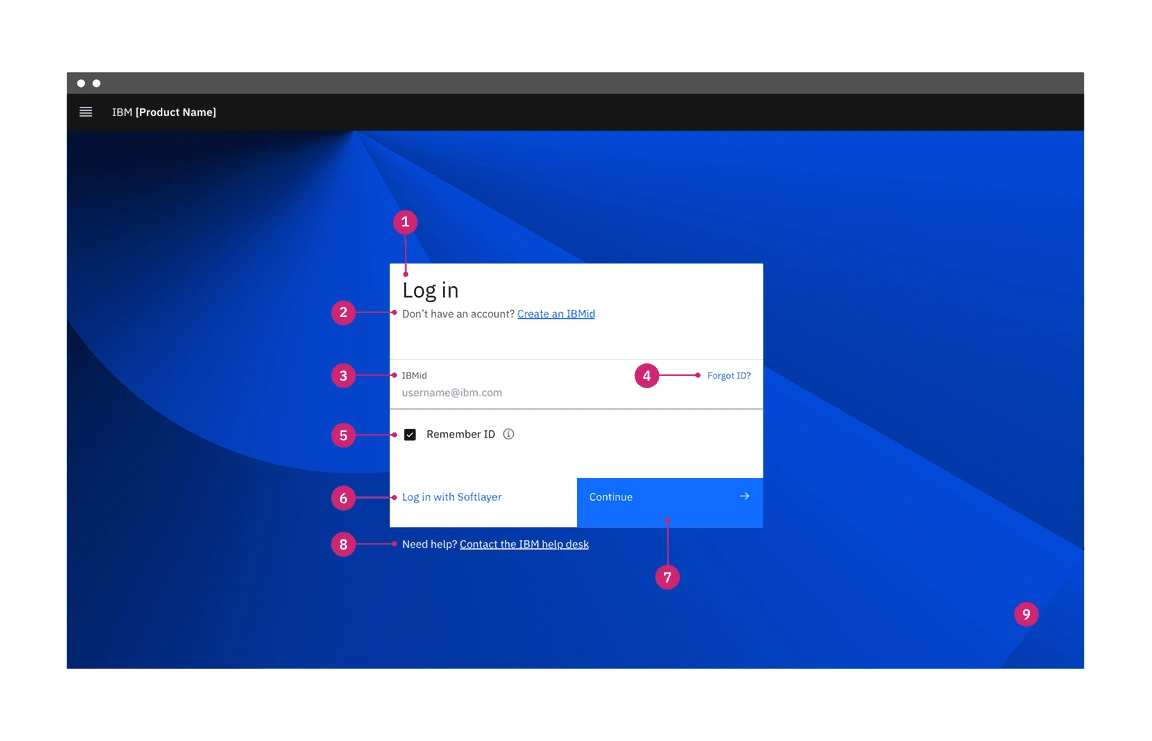
Image Source: Carbon Design System
When you reach the IBM SPSS download page, you must create an IBM account next. This account lets you access the free trial version of SPSS Statistics, download the software, and activate your trial license.
Filling out the registration form
Creating an IBM account requires only basic information:
- Find the “Sign up for My IBM account” page after clicking the “Try free” button on the SPSS Statistics page
- The Create your IBM SPSS account page will show you the account information form
- Complete all required fields in the Account information section – name, email address, and password
- Click Next to move to verification
Your email address becomes your username or IBMid for all IBM services. Choose an email you check often and can easily access for verification messages and future communications.
Students should consider using their university or college email address. Your institution might have special arrangements with IBM for SPSS Statistics, possibly giving you extended trials or special academic pricing.
Using LinkedIn or email to sign up
IBM SPSS gives you options when creating your account:
Email registration: The basic approach involves typing your email address and creating a password on the IBM form. Any valid email address works fine.
LinkedIn option: IBM lets you sign up with your LinkedIn profile. This option saves time since your information is transferred directly from LinkedIn. Look for this option on the registration page.
Do you already have an IBM account from using other IBM products? If so, you can sign in with those credentials using the “Sign in” option near the registration form.
Verifying your email with a code
After submitting your information, IBM sends a verification code:
- IBM emails a verification code to your provided address
- Look for an email from
[email protected]with “Action Required!” in the subject line - Type this verification code on the IBM verification page
- Click Create account to finish
No verification email? Try these fixes:
- Check your spam or junk folder
- Look for email filters that might send IBM messages elsewhere
- Make sure your spam filter allows emails with links from IBM domains
- Contact your email provider if they are blocking emails from
[email protected]
Still nothing? Click the Resend button on the verification page to get another code.
Once you verify your email and create your account, you can select the correct SPSS version for your device. The account creation process usually takes less than a minute, so it’s a quick step toward getting your SPSS free download.
Step 3: Choose the Right Version for Your Device
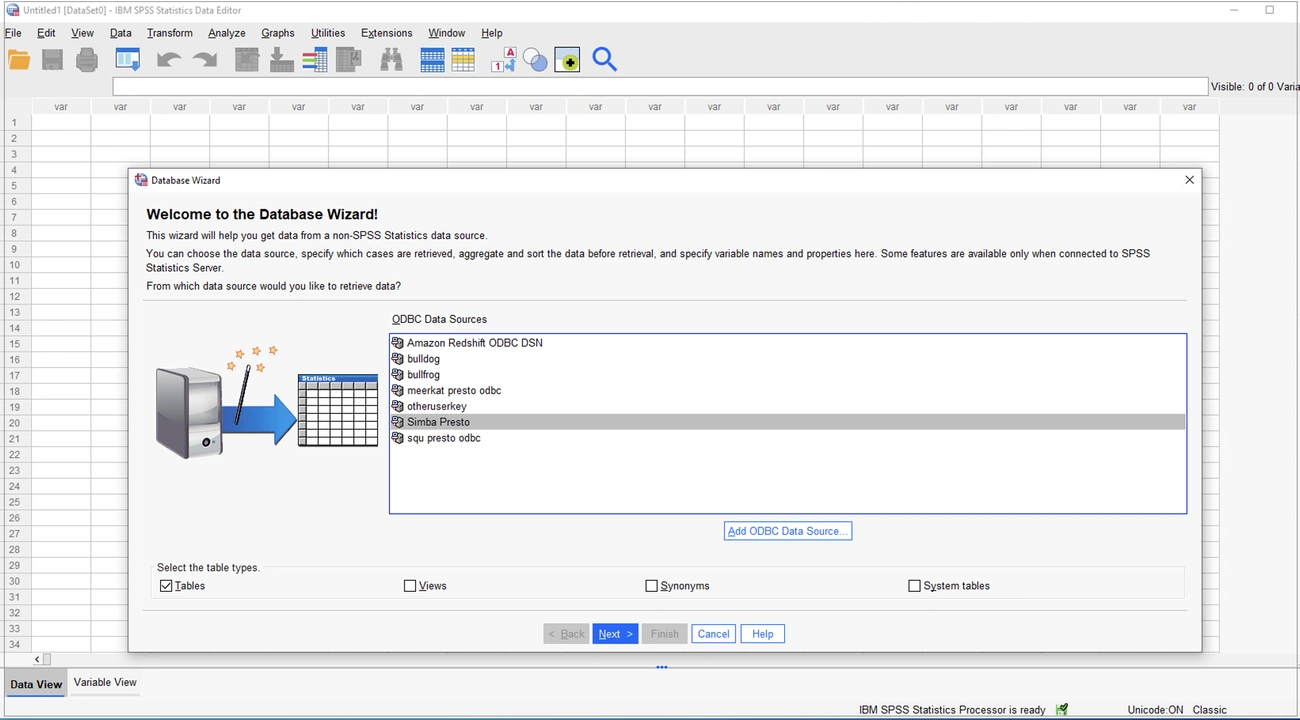
Image Source: DataOS Documentation
After creating your IBM account, picking the correct SPSS version matters a lot. Now, IBM SPSS Statistics only works with 64-bit operating systems, so you must know your computer specs before downloading.
IBM SPSS free download for Windows 10
Windows users should follow these steps:
- Go to the IBM Marketplace or product download page to see options for different systems
- Pick the Microsoft Windows 64-bit option from Downloads
- Click Download to start
- Save the file when your browser asks
The Windows installer is big – about 1.5 GB. After it downloads, run it with admin rights by right-clicking the file and selecting “Run as Administrator”. This helps avoid installation problems.
Important note: Getting the wrong bit version causes major issues. Some people see “a big white box and then nothing happens” when installing the 32-bit version on 64-bit machines. Always get the 64-bit version for Windows 10.
IBM SPSS free download for Mac
Mac users do this instead:
- Select macOS on the Download
- Click Download to get the installer
- Find the file in your Downloads folder
- Double-click the installer after the disk image mounts
Mac users need macOS High Sierra or newer. The IBM SPSS Mac version has all the same features as Windows, though some say it runs slower.
Mac users should know that SPSS for Mac can’t handle SPV output files because the SPSS SmartReader hasn’t been updated lately.
How to check your system type (32-bit or 64-bit)
Since SPSS only works on 64-bit systems now, check your computer type:
For Windows 10:
- Right-click on the Start menu
- Choose “System”
- Find “System type” in the window
- It will say whether you have a 32-bit or 64-bit
For Mac: Macs made after 2010 work with 64-bit. To check:
- Click the Apple menu (top left)
- Pick “About This Mac.”
- Look for “Processor” or “Chip” info
- Modern Macs (Intel or Apple Silicon) support 64-bit
Trying to install IBM SPSS on the wrong system type just creates a download. Remember that the Download is huge—about 1.5 GB—so make sure you have enough space before you start.
Step 4: Download and Install the IBM SPSS Software
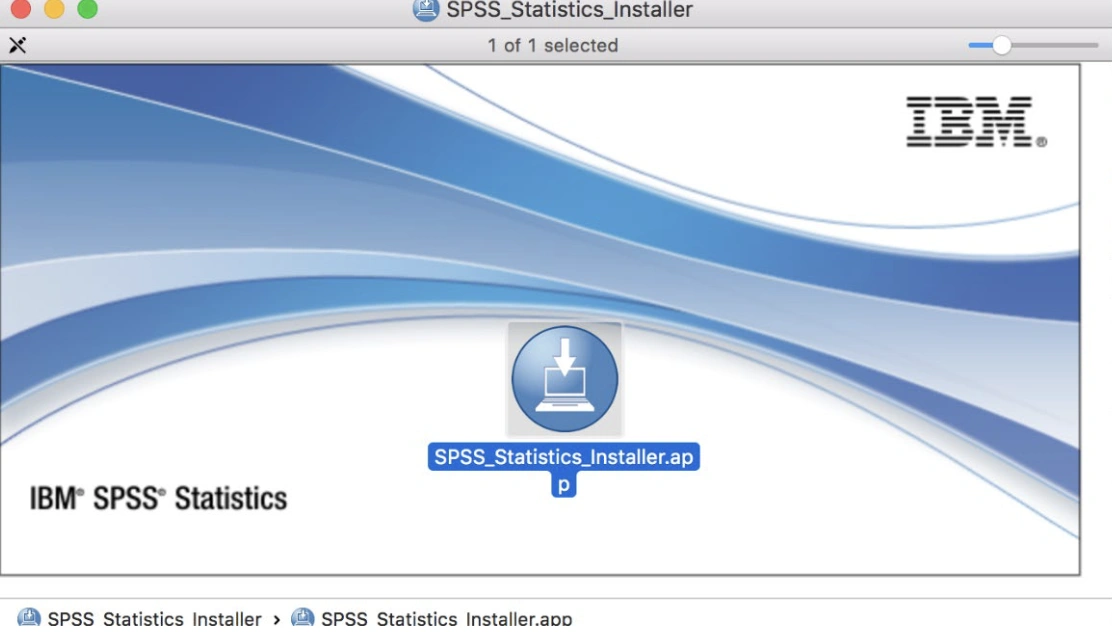
Image Source: CSUSM
After picking the correct version, you’re ready to download and install SPSS. Windows and Mac installations differ slightly but follow similar patterns.
Starting the download process
After selecting your version, look for the “Download” button on the IBM website. Click it to start downloading. Your browser might ask where to save the file—usually, it defaults to your Downloads folder unless you’ve changed your settings.
The file is big (approximately 1.5 GB), so ensure you have a stable internet connection. Depending on your connection speed, the Download might take several minutes.
Running the installer on Windows or Mac
For Windows users:
- Go to your Downloads folder
- Right-click the SPSS executable file
- Pick “Run as Administrator” to avoid installation problems
- Let the installer extract files—you might see extraction screens flash on and off
For Mac users:
- Find the downloaded disk image in Downloads
- Double-click to mount it
- A “SPSS Statistics” Finder window should open
- Double-click the installer icon to begin
Following the installation wizard
The installer walks you through these steps:
- Click “Next” on the welcome screen
- Check “I accept the terms in the license agreement” and click “Next.”
- Windows users might see an “IBM SPSS Statistics – Essentials for Python” option—choose based on your needs
- Use the default installation location (recommended)—click “Next”
- Hit “Install” to start the installation, which takes about 2-5 minutes
- Click “Finish” when it’s done
IBM SPSS launches automatically after installation and shows an activation screen. This sets up the next step—activating your free trial license, which is covered in the section below.
Step 5: Activate the IBM Free Trial License
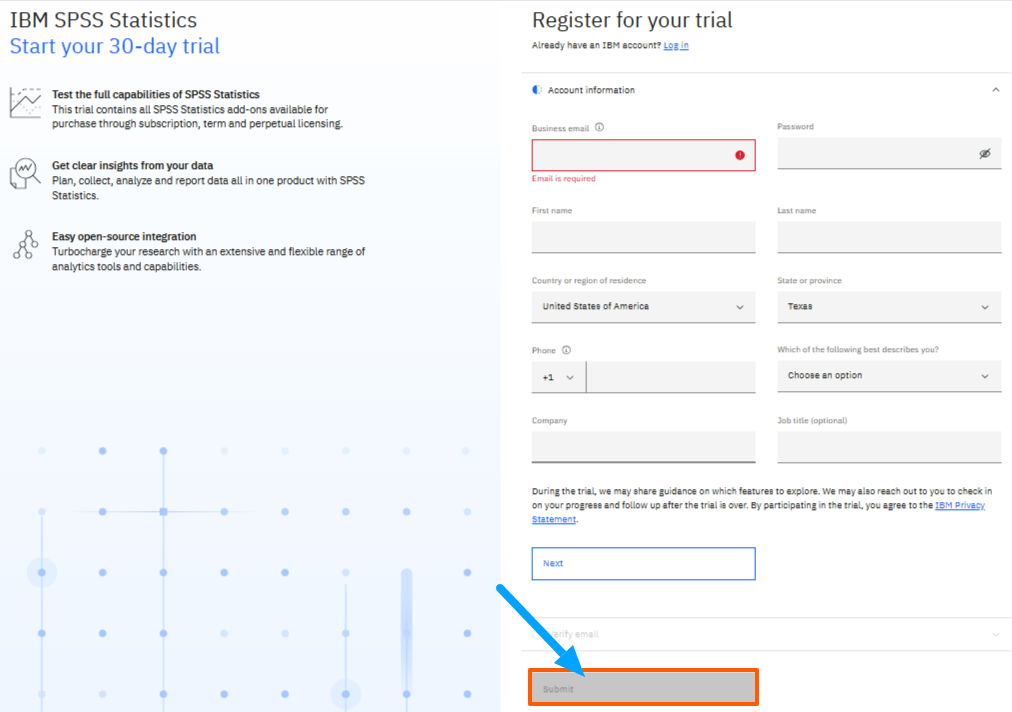
Image Source: GoTrialPro
After installation, you must activate your free trial to start using SPSS. This last step gives you access to all the software’s statistical tools.
Logging in with your IBM ID
The first time you open SPSS, it asks for your IBM ID:
- Start SPSS from your Start menu or Applications folder
- Type the email address you used for your IBM account on the login screen
- Enter your password and click “Sign In.”
- SPSS checks your credentials online
Remember to log in with your IBM ID every time you use the trial version. The trial works differently from permanent licenses—it connects directly to your IBM account instead of using authorization codes.
Entering the verification code
IBM adds a security step with email verification:
- After signing in, IBM sends a verification code to your registered email address
- Look in your inbox for this code (check spam/junk folders too)
- Type the verification code in the field on the SPSS login screen
- Click “Verify” to finish
Once verified, SPSS opens with all features ready to use. Having trouble? Check your IBM dashboard at myibm.ibm.com/dashboard for details on your plan and device.
Understanding the 30-day SPSS free trial limitations
The free trial has several vital limits:
- Trial duration: You get exactly 30 days from activation
- Feature access: The trial includes all add-ons plus the Base Subscription features
- Internet requirement: You need internet access the whole time you use the trial
- Automatic termination: After 30 days, the subscription ends by itself – no action needed
- No renewal: You can’t extend past 30 days with the same IBM ID
Unlike permanent licenses, which need authorization codes through the License Authorization Wizard, the trial uses your IBM ID. This makes the software quickly available for student projects and research while giving you the complete SPSS experience.

Accessing IBM SPSS Made Simple for Your Academic Success
SPSS Statistics packs powerful data analysis tools that boost your academic research projects. This guide outlined five key steps to legally access this statistical software without paying upfront. The whole process – from finding IBM’s website to activating your trial – needs minimal tech knowledge but gives you maximum analytical power.
Remember that downloading directly from IBM means you get genuine software without malware, plus full functionality during your 30-day trial. The account setup takes less than a minute, perfect for busy students with tight deadlines.
Check your system specs carefully before downloading, since SPSS only works with 64-bit operating systems now. This small step prevents installation problems and ensures everything runs smoothly. The activation connects directly to your IBM account, which means no complicated license management – just immediate access to all features.
The 30-day limit means you’ll eventually need to buy SPSS or check what your university offers, but this trial gives enough time to finish most academic projects. During these 30 days, you’ll use the same statistical tools professional researchers rely on worldwide.
Statistical analysis becomes much easier with the right software. Whether working with survey data, testing hypotheses, or creating visualizations, SPSS gives you professional-grade tools that strengthen your academic work. Download it today and change how you handle data analysis!
Conclusion
Since 1968, SPSS has changed how researchers handle statistical analysis. This article showed how the software gives users tools to manage, analyze, and visualize complex data. New and experienced researchers appreciate the straightforward interface with its Data View and Variable View screens.
What makes SPSS valuable? Users get comprehensive analysis options without needing coding skills. The basic statistics functions work alongside advanced predictive modeling tools. Specialized add-ons like Text Analytics and Visualization Designer complete the package for anyone doing quantitative research.
SPSS works across many fields. Market researchers find consumer insights through segmentation tools. Schools predict which students might drop out. Healthcare teams model patient outcomes. Retailers build better customer profiles. Real success stories prove its worth – one insurance company saved $25 million catching fraud, while universities predict at-risk students with 82.4% accuracy.
The software does have limits. Huge datasets cause problems, poor-quality data leads to bad results, and complex problems sometimes get oversimplified. However, these drawbacks matter less when users apply the tool correctly.
SPSS remains essential for academic research, business analysis, and public health studies. The software balances accessibility with powerful features, making it a key resource for turning raw numbers into valuable insights as data becomes increasingly important.
FAQs
Q1. What are the key features of SPSS software?
SPSS offers comprehensive data management, statistical analysis, and visualization capabilities. Key features include descriptive and inferential statistics, predictive modeling, text analytics, custom visualization tools, and robust data handling functionalities.
Q2. How does SPSS benefit different industries?
SPSS is used across various sectors, including market research for trend forecasting, education for student retention analysis, healthcare for patient outcome modeling, and retail for customer profiling. Its versatility allows organizations to derive actionable insights from complex datasets.
Q3. What are the main components of the SPSS interface?
The SPSS interface primarily consists of Data View and Variable View. Data View displays the data values in a spreadsheet format, while Variable View shows metadata about variables such as names, types, labels, and measurement levels.
Q4. What types of statistical analyses can be performed using SPSS?
SPSS supports various statistical analyses, including descriptive statistics, t-tests, ANOVA, regression analysis, factor analysis, cluster analysis, and non-parametric tests. It also offers advanced techniques like survival analysis and structural equation modeling.
Q5. What are some limitations of SPSS?
While powerful, SPSS has some limitations. Due to memory constraints, it can struggle with massive datasets, relies heavily on data quality for accurate results, and may oversimplify complex problems. Additionally, some advanced features require separate add-on purchases.
Q6. Is SPSS available for free to students?
While SPSS is not generally free, students can access a 30-day free trial through IBM’s official website. Some universities also provide free or discounted access to SPSS for their students.
Q7. What are the system requirements for installing SPSS?
SPSS now exclusively supports 64-bit operating systems. For Windows users, it’s compatible with Windows 10 64-bit. Mac users need macOS High Sierra or newer. Always verify your system specifications before downloading.
Q8. How do I activate the SPSS free trial?
After installation, launch SPSS and sign in with your IBM ID. You’ll receive a verification code via email. Enter this code to complete the activation process and gain full access to all features for 30 days.
Q9. Can I extend the SPSS free trial beyond 30 days?
The free trial cannot be extended beyond the initial 30-day period using the same IBM ID. However, some users create new accounts with different email addresses to access additional trial periods, though this may violate the terms of service.
Q10. Are there any limitations to the SPSS free trial version?
The trial version includes all the features of the full software for 30 days. However, for the software to function correctly, you must maintain internet access throughout the trial period, and the trial automatically terminates after 30 days without renewal options.
Thanks for sharing this helpful guide! I didn’t realize there were so many options for accessing SPSS for free or at a reduced cost. I’ll definitely look into the student access option since I’m currently enrolled. Appreciate the info!
You’re very welcome! I’m glad the guide was helpful and that you found the options for accessing SPSS useful. Since you’re enrolled, the student access could be a great way to save on costs. If you need any further assistance or have more questions as you explore the options, feel free to reach out! Happy learning!
Thanks for sharing this informative post! I really appreciate the options you’ve outlined for accessing IBM SPSS. As a student, it’s great to know there are free options available for us to use in our projects. I’ll definitely check out the trial and student access details you provided!
Thank you so much for the kind words! I’m glad the content resonated with you. I definitely appreciate the suggestion about adding images—visuals can really enhance the message, and I’ll keep that in mind for future posts. I’m thrilled that you enjoyed the read, and I’ll be sure to keep the content coming. Looking forward to having you back! If you ever have any thoughts or questions, feel free to reach out.